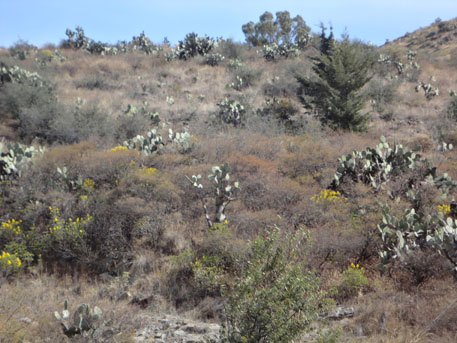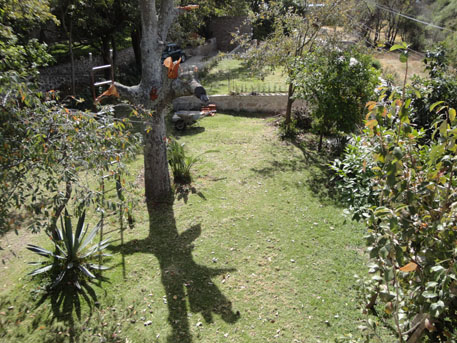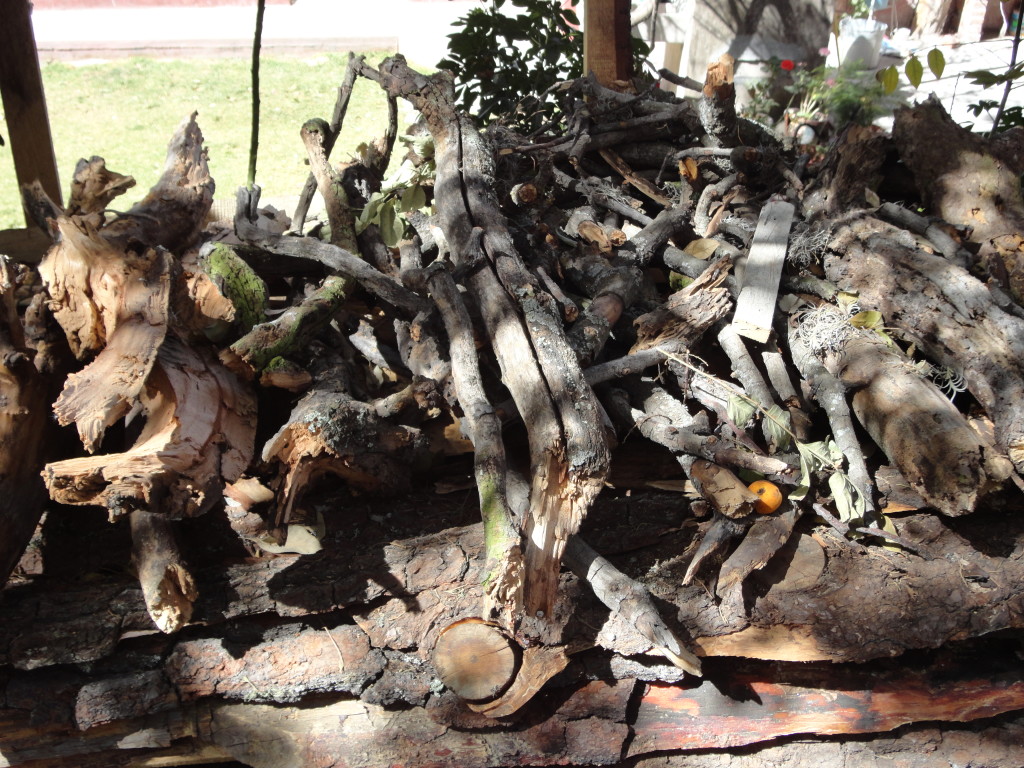This animated collage is my homage to my father and to the family house that he has built in a small hill town called San Miguel Tlaixpan. This hill town is located in the Texcoco Sierra, which connects the states of Puebla, Tlaxcala and of Mexico.As stated by Mendoza Ontiveros (2010), this San Miguel Tlaixpan is located in the “area in which the nine mountains descend to the plateau” (p. 96).
There are several archeological sites in this mountain system. In the main or larger mountain,there used to be a emple dedicated to Tláloc, the Nahua God of rain and thunder. This shows that the Texcoco Sierra was known to be a source of water for the nearby towns, including San Miguel Tlaixpan.
Veronica Sahagun (2011). In the Sierra.
Adjacent to San Miguel Tlaixpan, there is another hill called Texcotzingo (which means little Texcoco). In this area there is an archeological site known as the baths of King Nezahualcoyotl, a poet and an architect who governed the lordship of Texcoco during times of the Aztec empire. Nezahualcoyotl designed the aqueducts for the water coming from the Mountains in the Texcoco region, as well as the Chalpultepec aqueduct located in the former Tenochtitlan (now Mexico City). According to Lorente Fernandez (2010), due to these architectural enterprises, Nezahualcoyotl is often associated to Tlaloc (p. 71). Thus, anthropological studies on this region suggest that the handling of water has continued to be central among the “piedmont” towns of the Texcoco Sierra. Armillas, Palerm and Wolf (1955) provide the following description of the use of water in San Miguel Tlaixpan:
Cultivation seems to be much more intensive in the piedmont than in the sierra, and agricultural methods show greater care. Especially at San Miguel Tlaixpan and San Nicolas Tlaminca, agriculture is carried on irrigated terraces (sing. kalilli; pI. kaldltin), carefully built of adobe and stone. Plants are allowed to mature in seedbeds before transplanting. Flowers raised for the market are covered to protect them against frost. Animal fertilizer is collected and in general use. Water distribution is handled by a communal body of water commissioners (regidores de agua), and each landowner receives water once every Mesoamerican month of twenty days. The amount of water distributed to each person depends on the size of the terraces owned by him. Small storage tanks, situated on the terraces are used to conserve water for household use. It is interesting to note that absence from the weekly communal work (faena) is punishable by withdrawal of water rights for the following period of distribution. (p. 267)
Veronica Sahagun (2011). My Favorite Tree.
As suggested by this text, my father has been involved in the communal town tasks. He is currently part of the water distribution commission. Thus, the San Miguel house has been a life long project for my father as he designed and built some parts of the house himself. He also designed a beautiful orchard that that features a variety of flowers and plants, including roses, orchids and wildflowers, as well as apple, orange and avocado trees. My father combined his skills as an agricultural engineer and an individual familiar with local traditions to create a water collection system in this beautiful area. My father’s designs and works are an inspiration for me. He has showed me how ancient traditions may be preserved as well as enriched further by combining with contemporary knowledge. As a child, I spent most of my weekends in the San Miguel house. Friends from school would come over. We used to follow the sound of the water in search of hidden treasures. This made us run up and down the town´s slopes, go hiking in the higher areas of the hill and climb countless trees. At the end of our journey, we knew there would be grilled beef tacos and nopales (cactus), zucchini flower quesadillas, guacamole and homemade dessert! We never found the treasures, but now I know that house and San Miguel’s countryside is one of my dearest treasures. I feel relief to know that, generally speaking, San Miguel Tlaixpan has remained the same over the years. I think that this consistency is connected to its distance from the city. In times like this, when violence has taken over Mexico, it is good to know that there are places that remain untouched. San Miguel Tlaixpan is a good refuge for the soul.
Veronica Sahagun (2011). Wood from My Favorite Tree.
References
Lorente Fernandez, D. (2012). Nezahualcoyotl es tlaloc en la sierra de texcoco: Historia nahua, recreación simbólica. Revista Española De Antropología Americana, 42(1), 63-90.
Mendoza Ontiveros, M. (2010). Performance y drama social: La representacion de la batalla del 5 de mayo en una localidad mexicana. Convergencia, Universidad Autónoma Del Estado De México, 17(54), 93-110.
Wolf, E. R., & Palerm, Á. (1955). Irrigation in the old acolhua domain, mexico. Southwestern Journal of Anthropology, 11(3), 265-281.


